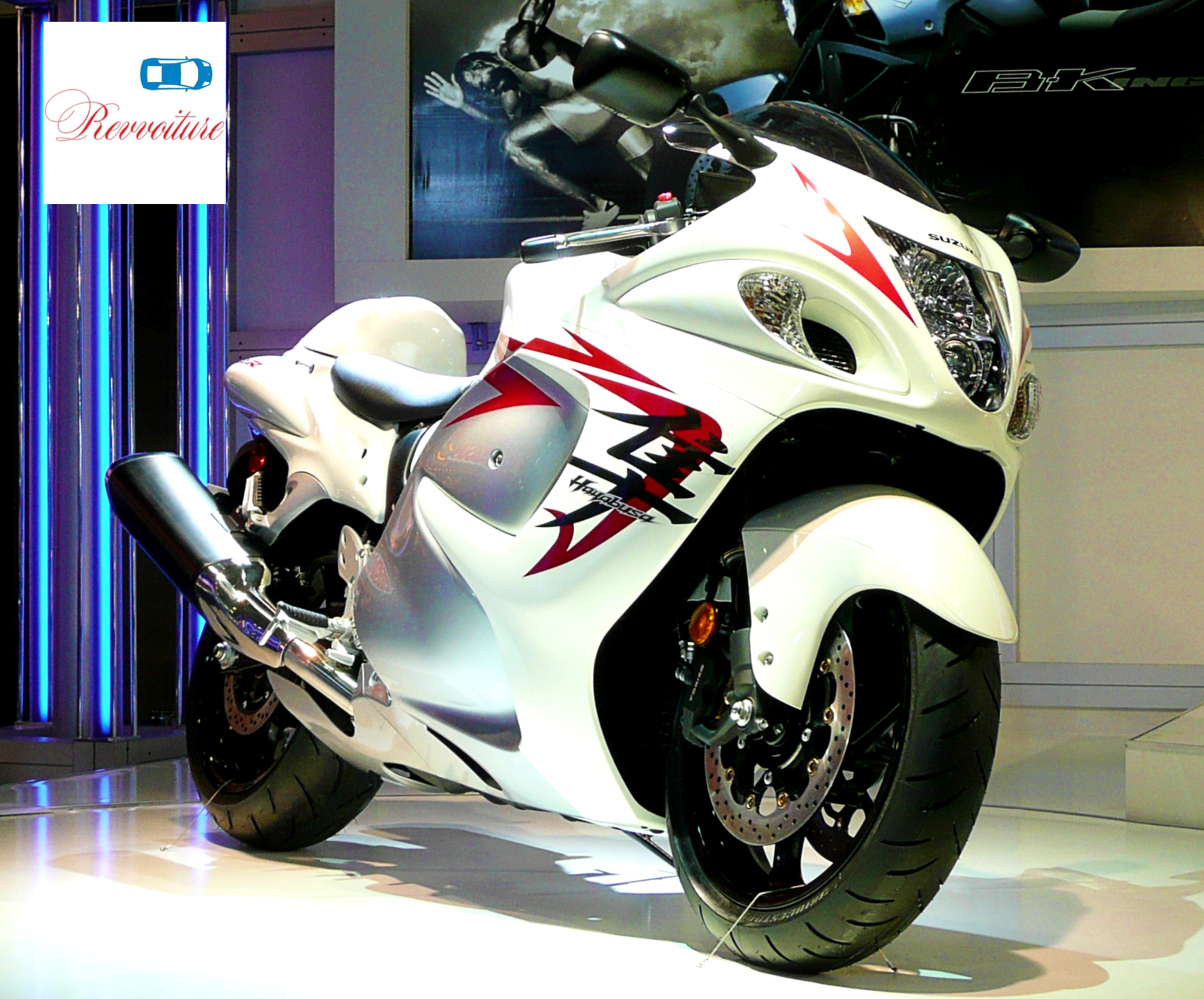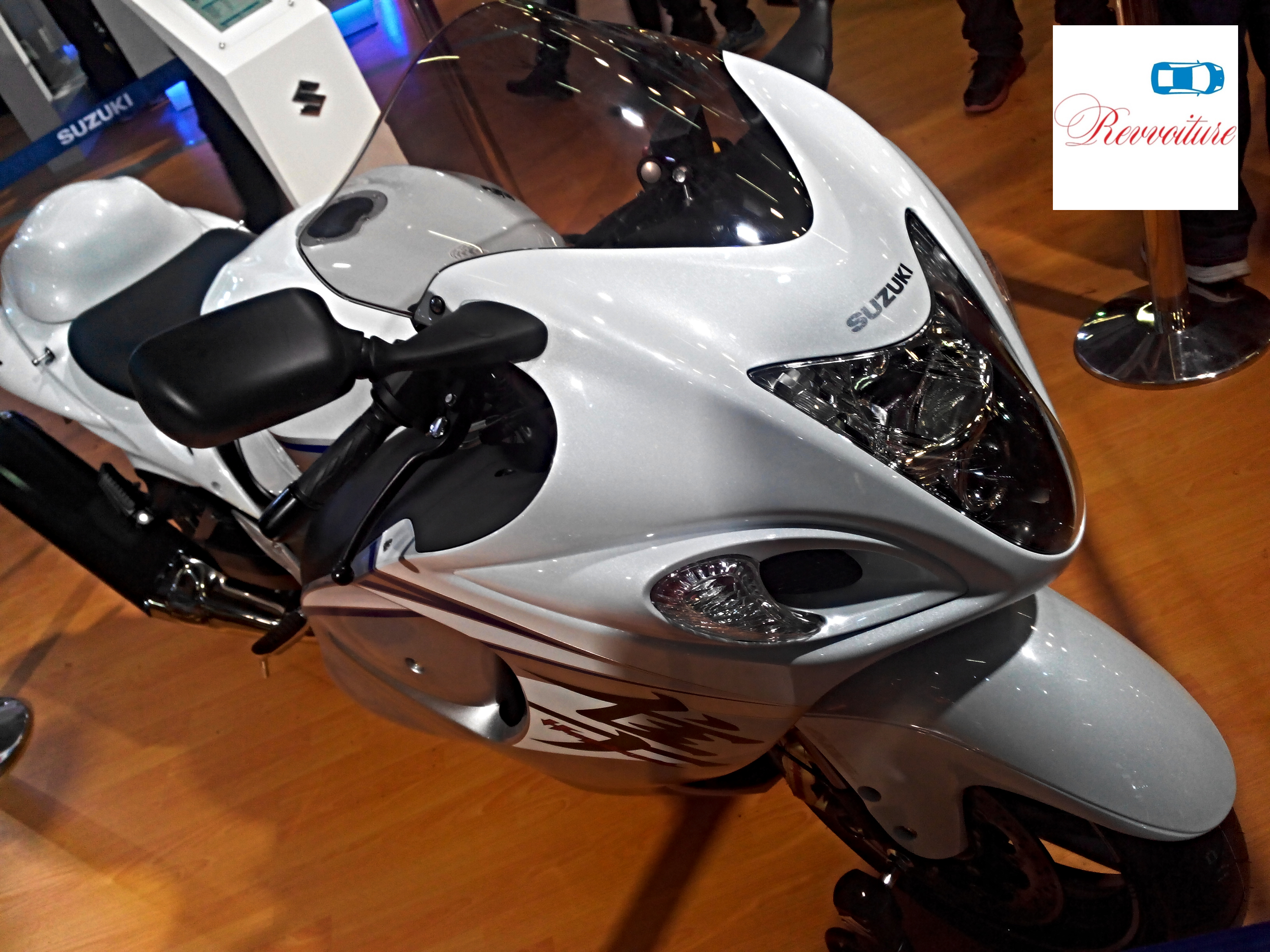
2nd Generation Hayabusa GSX1300R
Sport bikes, super bikes or ultimate mean machines are insane power generating automobiles that have a special importance on one's life. Enthusiasts simply adore balancing a heavy high speed bike, the wind, the sense of control, and the pumping adrenalin which is just pure bliss. Over the years, we have seen many super bikes around the world, revving their engines, spitting flames, and stretching to great speeds, but there is one super bike that literally has no haters, and creates an unbreakable legacy. I am talking about the legendary Hayabusa or technically called the Hayabusa GSX1300R which officially is India's first superbike. For those who are not too familiar with the name per say might connect with the bike through the movie Dhoom🏍️, with John Abraham screeching his Hayabusa at the speed of 300km/h to get away from cops. The motorcycle industry from late 1980s started to see shift towards sporty fast bikes, not just for legal races but for general public. People started demanding bikes that could pull numbers on the accelerator, and looked sleek too, many companies jumped to this opportunity to create a name for themselves. After years of constant developments, and improvements, Honda in the 90s gave birth to CBR1100XX which was also called the Super Blackbird. Suzuki did not like this at all, and introduced its own superbike in 1999 by name Hayabusa which means Peregrine Falcon in Japanese. Suzuki's falcon was eventually able to win over the bird from Honda, and also from that green not so stealth mode enabled Ninja from Kawasaki. Currently we are in the reign of the 3rd generation Hayabusa, but that is not what we are discussing here today. We are here to talk about its bolder, meaner predecessor, the 2nd generation Hayabusa which ruled the world from 2008-2022. The 2nd generation Busa was the attention grabber, some styling, and performance improvements but still stuck to the roots where it came from. The price for India was around ₹16.7lakhs ex-showroom Delhi which went up-to ₹19lakhs on road. Now these are some serious numbers when it comes to Indian consumers, a sports bike with no utility benefit, and a gigantic price tag. Few people had the first generation Busa in India but those were all imported from Dubai. In later years, Suzuki officially launched the 2nd generation Busa in India, and started accepting import orders, but they had to face challenges of the Indian consumer. Were they able to conquer all the challenges? Was the 2nd generation Busa a success? Let us find out
Engine and Engineering
Talking about the Hayabusa, we have to mention the power generated by this beast. The 1340cc 4-stroke 4-cylinder liquid cooled DOHC engine with 6-speed mesh gearbox produced 196hp, and 154nm torque resulting in 0-100km/h in just 2.7secs, and a maximum speed of 312km/h. Suzuki installed the same engine as that of the first generation but made some tweaks for more power, and efficiency. Tweaks like better compression ratio from 11:1 to 12.5:1, more compact cylinder head, lighter pistons, and lighter titanium valves, and exhaust valves. Along with all of this, there were twin 10-hole fuel injectors, a launch control system, and a dual throttle valve system specially designed by Suzuki. The company claimed a mileage of 17.8km/l with a 20l fuel tank. 2nd gen Busa's engine was so great that Suzuki carried the same engine for the 3rd generation with some additional quirks to pass the emission norms.

Design
If we keep all three generations of the Hayabusa next to each other, the first thing we would notice are very few design changes from the first generation to the next with no major changes in the frame, but the third generation now looks like it just attended a semester abroad under the guidance of various Moto GP professionals. Basic design language of the Hayabusa looked actually similar to the Honda CBR1100XX but better in every way. Inspired by a diving falcon, the front was sloped for better aerodynamics, and the driver to not get air drag. 17-inch 7 spoke alloy wheels with wider rear tyre for more grip on high speeds. 800mm seat height, and 125mm ground clearance which is perfect for a super bike, although low bars came in the way of comfort. Suzuki offered only 3 dual color options - Black Gold, White Red, and White Gray, with the first as base color, and the second for highlighting some elements on the bike like the Japanese Hayabusa logo. The iconic Black, and Red from the first generation GSX1300R was discontinued for unknown reasons. 4 exhaust outlets merging into two circular exhaust pipes, these exhaust pipes were lighter from the first generation, but these were also the first thing that a lot of users swopped for modifications of their Busa for even more lighter exhaust. Everything was perfect for the Busa, the frame, the tyres, the round water drop head-lights, but Suzuki ignored the side-view mirrors, and the instrument cluster which looked too outdated for its time.

Features & Safety
Normally, when it comes to 2-wheelers or even super bikes, there isn't much scope for a plethora of features. The 2nd generation Hayabusa was no different, but it still got all LED headlights, taillights, and turn signals, Lift Control System to increase ride height while driving around speed bumps, Engine Kill switch, and a Cruise Control. A Traction Control system for better grip while handling, and in 2013 2-channel ABS, and Brembo Brakes were also introduced in the 2nd generation Hayabusa.

| Everything Good | Everything Bad |
|---|---|
| Looks Justify the Superbike | Minor changes from 1st to 2nd gen |
| Exhaust note is pure music | Too pricy |
| Superbly fast | Frequent visits to the workshop |
| Long wheelbase for stable ride | |
| Competition is nowhere close |

Conclusion
Since its launch in 1999 with the first generation, there has been crazy fan following for the Busa, its looks, its performance, is all just mesmerizing. Although, there aren't major design, and performance changes from the first to the second generation but if we compare, then the second generation is a clear winner. Globally, the Hayabusa is also very common for legal, and illegal modifications that enthusiasts work on like adding the Timing Retard Eliminators (TREs), ECU re-mapping, and removing the Rear Sprocket teeth which results in even more high speeds. One of the favorites among the enthusiasts is that they just rip apart heavy exhaust, replace low bars with higher bars, add a supercharger, and then it's all good to go. Even after undergoing modifications, buyers complained about frequent sensor failing, and chain damages leading to regular visits to the workshop with a hefty repair bills. With a price tag of ₹19lakhs on road Delhi, YES I agree, the price was too pricy for India, but the Hayabusa is pure bliss with no close competition available in India, so the buyers get a bold looking, power generating beast which is heavy on the pockets but it justifies every penny. Be it stock (no modifications) or be it a beast with a lot of legal, and illegal mods as steroids, the Hayabusa is still one of the best superbike in history.